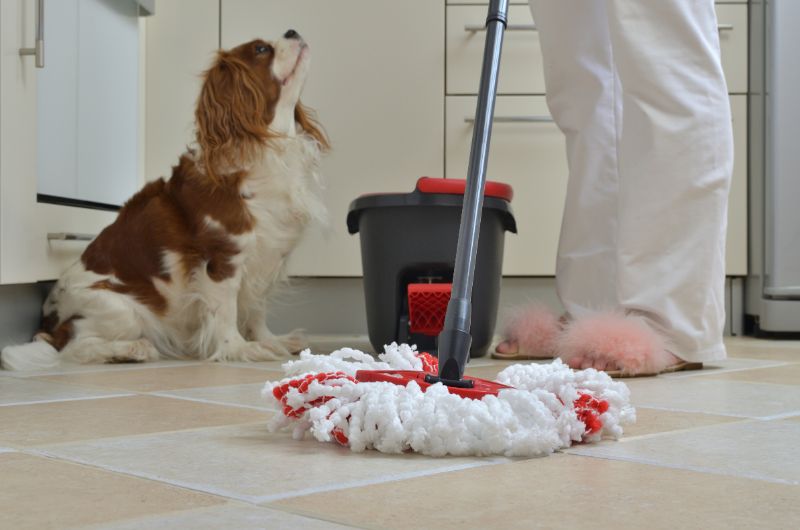Housing Household Pet Hazards

We often think of our pets as our children. After all, they are smaller than us, depend on us for everything, and they are super cute!
As with our children, it’s paramount that you do what it takes to keep your furry family member safe. For example, many households with small children are likely to be outfitted with cabinet locks, outlet covers, baby gates, and childproof door locks. However, not so many pet parents take these precautions; but why?
When you stop to think about it, household pet hazards are abundant in the average home. At Animal Medical Hospital & Urgent Care we often see patients who have encountered trouble in the home. We know, though, that with a little bit of knowledge, we can keep household pet hazards away from our fur babies successfully!
Common Household Pet Hazards
To mount a successful attack, one must know their enemy. Understanding what things in your home could pose a threat is a great place to start. Some are more obvious than others.
Common household pet hazards include:
- Human medications
- Pet medications (many of which are designed to be tasty)
- Insecticides and pesticides
- Xylitol-containing items like gum, toothpaste, and sugar-free candy
- Rodent poisons
- Chocolate (including baked goods)
- Cigarettes and other tobacco products
- Recreational drugs including marijuana
- Cleaning products
- Garbage
- Some household plants (i.e. lilies for cats)
Of course that doesn’t include things that might be ingested and cause a blockage like socks, pacifiers, or kid’s toys.
All of these objects are potentially harmful if ingested or other prolonged exposure occurs. If you think your pet may be affected by one of them, it is a pet emergency. Call us right away to determine the best course of action.
Under Lock and Key
Obviously it is not possible to have a household that does not contain any of these items. Like with children, the key lies in how and where you keep them. Viewing your home and these types of hazards from your pet’s view point is essential to keeping them safe.
Consider:
- Avoiding when possible – Some things are avoidable. Researching plants before bringing them into your home, choosing pet safe pesticides, and not smoking are all easy ways to keep trouble out of your household.
- Taking note of potential problems – Identify things that could pose a hazard. Where are medications kept (human and pet)? Could your pet access them? Are your cleaning supplies a potential problem? Do you have a diabetic family member who eats a lot of sugar-free products?
- Security measures – Thinking like a pet is a great tactic here. Keeping hazards like medications, trash cans, and cleaning supplies in a secure, locked cabinet or closet is a good plan in most situations. Consider unique situations as well. Does someone in your home need to have an inhaler close by? Where can you keep it accessible but away from your animals? Smoker in the home? How can you dispose of cigarette butts safely?
- Having a plan for when things go off track – Many times exposures happen when routines go out the window. Having a houseguest for the week? Be sure that their purses, coats, and suitcases are secured so that your pet doesn’t find something he shouldn’t. Party at your house? Keep in mind that guests may bring along things in their personal belongings that your pet might find and open doors that normally aren’t open. Have a plan!
It is always devastating when household pet hazards become responsible for a sick or injured pet. This is because many of them are avoidable. Knowing better is half the battle, though. With some forethought and planning, we hope that your fur children can avoid any accidental exposures.
